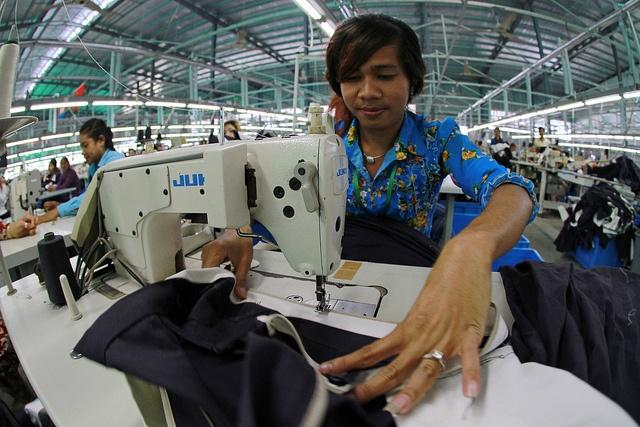
In a huge step for supply chain transparency, Gap Inc. announced last week that it would publicly release the factories from which it sources apparel.
The extensive roster of factories, which includes dozens spread across Bangladesh, Cambodia, China, India, Indonesia, Sri Lanka and several other countries, will make it far easier for Gap’s stakeholders and partner NGOs to assess the environmental and social impacts of the company’s supply chain.
Previously, Gap had refused to release such information, citing what the company described as “competitive reasons.”
Human Rights Watch (HRW), one of many NGOs that pressured Gap to release its supplier list, applauded the company, saying it was good news for workers, the fashion industry and consumers. Only a month earlier, HRW slammed the corporate parent of Gap, Banana Republic and Old Navy -- calling the company out for an ad campaign that enforced gender stereotypes while insisting the company lagged behind on supplier transparency.
Earlier this year, Marks & Spencer and the Dutch-Belgian fast fashion giant C&A also publicly released their lists of supplier factories. Those companies are joined by other apparel industry giants including Adidas, Columbia, H&M, Levi’s, Nike and Patagonia.
The news about Gap was followed by an announcement from VF Corp., which owns brands including Timberland Vans and The North Face. The company released a list of 1,800 supplier factories spread across 60 countries.
Gap is often dogged by accusations of human rights abuses across its global supply chain. Like many retailers, the company has long touted its corporate responsibility chops, only to have international labor and human rights groups accuse it of looking the other way when it came to scrutinizing suppliers’ factory conditions overseas.
One NGO accused a major Gap supplier in Bangladesh of working its employees up to 100 hours a week while cheating them on their wages and denying women their mandated maternity leave. HRW has logged similar complaints in Cambodia just last year, with workers as young as 12 denied bathroom breaks while toiling in dangerous conditions as they stitched garments for Gap’s stores. These shenanigans of Gap and its peer companies are partly why labor advocates here in the U.S. oppose the controversial Trans Pacific Partnership (TPP) trade agreement, even though this trade treaty claims U.S.-made textiles could actually see growth in these emerging markets.
Meanwhile on the domestic front, Gap says it wants to do better. The company has been behind a campaign to bring women’s salaries on par with those of men’s. It aims to halve its total greenhouse gas emissions by 2020. And in its stores, Gap raised wages while it had already enjoyed a reputation as being a welcoming company for LBGT employees.
But to many observers, the story has been different when it comes to the overseas workers who technically are not Gap employees, but make the very garments that are the foundation of the company’s business. The company has launched several programs, including a skills enrichment initiative that aims to improve the lives of 40,000 seamstresses working in 12 countries. Actions like these led to Fortune including Gap in its 2016 “Change the World” list. The public disclosure of its factories now gives third parties an opportunity to see whether or not this apparel giant is putting its money where its mouth is.
Image credit: World Bank/Flickr

Leon Kaye has written for 3p since 2010 and become executive editor in 2018. His previous work includes writing for the Guardian as well as other online and print publications. In addition, he's worked in sales executive roles within technology and financial research companies, as well as for a public relations firm, for which he consulted with one of the globe’s leading sustainability initiatives. Currently living in Central California, he’s traveled to 70-plus countries and has lived and worked in South Korea, the United Arab Emirates and Uruguay.
Leon’s an alum of Fresno State, the University of Maryland, Baltimore County and the University of Southern California's Marshall Business School. He enjoys traveling abroad as well as exploring California’s Central Coast and the Sierra Nevadas.














